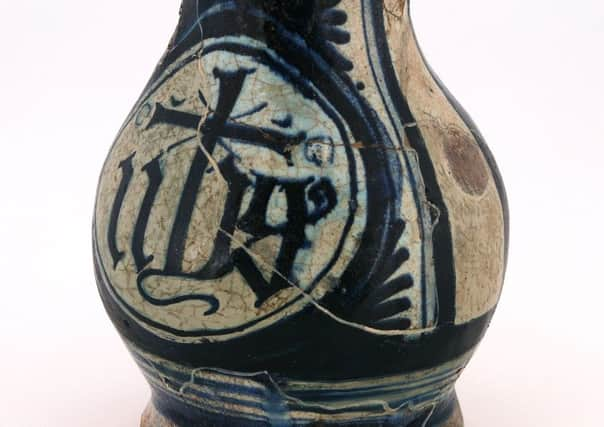EXHIBIT OF THE MONTH: Important role vale played in practice of religious order


This small 16th century altar vase stands less than 14cm high but played an important role in the life and practices of the White Canons or Norbertines of the Premonstretensian religious order who lived and worked at the Abbey.
Beauchief Abbey was founded officially in 1183 and was dedicated to “God and St Mary and St Thomas the Martyr and to the brothers of the Premonstratensian order.”
Advertisement
Hide AdAdvertisement
Hide AdIt was one of 35 abbeys in Britain run by the Premonstretensian religious order.
The vase was used to hold the wine for Holy Communion on the altar of the church.
Other vases of a similar type were used to display white lilies, the symbol of Mary’s purity, and marigolds, to show her heavenly glory. Amongst these beautiful flowers, the Norbertines went about their work.
The men who served there were not monks, but canons - priests who went out into the community to preach, provide medical care and teach.
Advertisement
Hide AdAdvertisement
Hide AdThey were known as the White Canons because their habits were made of white wool.
The altar vase was found during excavations at the Abbey in the 1920s.
It was in pieces - the main body was found a whole week before two of the smaller pieces - and has since been reconstructed.
The handles have broken off but would have been two small loops.
Advertisement
Hide AdAdvertisement
Hide AdThis vase is of Majolica, a form of tin-glazed earthenware; unlike a lot of medieval ceramics the vase would have been waterproof.
The blue and white decoration is typical of Majolica and this vase has a pale lilac glaze on the inside.
The central lettering spells “IHS”, an abbreviation of the Latin words Iesus Hominum Salvator, which translates as Jesus, Saviour of men.
The letter ‘H’ also doubles as a cross, the traditional Christian symbol.
Advertisement
Hide AdAdvertisement
Hide AdPrestige items like the altar vase show that Beauchief Abbey, like many monasteries, was a rich establishment.
Majolica pottery was invented in Italy but by the 1500s was made across continental Europe.
This vase was imported from the Netherlands.
It make sense that an altar vase, which played a special role in the canons’ religious practice, was made of expensive imported pottery.
Under Henry VIII’s Dissolution of the Monasteries, Abbot John Greenwood surrendered the Abbey in 1537.
Advertisement
Hide AdAdvertisement
Hide AdThe canons were allowed to leave without harm and would have gone to work in other parishes as priests.
The buildings were dismantled over the years and the lands passed to the Strelley and Pegge families.
This beautiful altar vase and many other artefacts from Beauchief Abbey are on display in the new Beneath Your Feet gallery at Weston Park Museum.